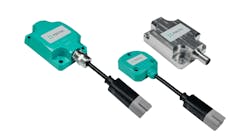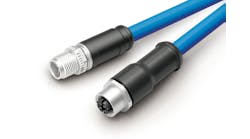Our panel of six industry experts addresses what you need to know when deciding the wire color coding standard that works best for your needs. As the Industrial Internet of Things (IIoT) continues to gain mindshare and acceptance, the roles of the cables, connectors and wires that move the data become more important.
How do you decide which wire color coding to use? Are there advantages to NEC, NFPA, IEC, CSA or a proprietary system used by an end user?
Craig Fox, connectivity product manager at Murrelektronik: At present, we see a variety of color codes in use. Most of this is derived from legacy systems, design specifications and platforms that are generations old. As companies expand with global operations, and as equipment manufacturers seek to sell their machinery in the global market, the need for international standards becomes apparent. While many choices still exist, the clear preference within industrial control systems is the IEC color code.
Alex Dzatko, proposals specialist at Pepperl+Fuchs: Wire color is first determined by what our customer prefers. If there is no preference, we will choose the wire color scheme that matches the location of the electrical panel. If end location is not known, we will often default to the specifications set out in the National Electric Code (NEC).
Allen Bennett, field application engineer at Allied Electronics & Automation: There are specific requirements by the NEC for wire color codes and where they are used. These designated colors are used on the supply side of the panel. NFPA governs wiring between panels and is concerned with AWM cable insulation made with material that conforms to NFPA requirements.
Jack Zurick, senior control systems engineer at Thermo Systems, a Control System Integrators Association (CSIA) member: Typically, the color coding of wire has been standardized by the UL 508A, NFPA 79 and JIC standards, although exceptions can be made where multi-conductor cables are concerned. Our company, Thermo Systems, standards regarding this matter have been arrived at over time with careful consideration to these standards and conventions.
Scott Byrne, senior manager, power, instrumentation & controls, at Matrix Technologies, a Control System Integrators Association (CSIA) member: It’s always advisable to use a national standard over a proprietary system. In terms of personal safety, you never who will be working in the facility and doesn’t understand what the proprietary system is. One should consider the standards used in the facility’s OEM equipment and strive for consistency through the entire facility.
Jennifer Grace, product technical manager—connectivity at Balluff: It's traditional in sensing to use an IEC standard. Using a standard that customers recognize and are comfortable with provides value, in that it:◦ prevents errors
◦ is easier to troubleshoot
◦ prevents confusion.
◦ is easier to troubleshoot
◦ prevents confusion.
ALSO READ: Don't let poor wire and cable decisions slow down your next project
About the author: Mike Bacidore












